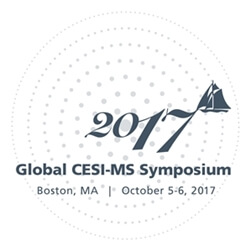 Bringing Together KOLs and Scientists from Around the World
Bringing Together KOLs and Scientists from Around the World
The 2017 Global CESI-MS Symposium brought together KOLs and industry innovators from around the world to share their latest advancements using capillary electrophoresis integrated with electrospray ionization (CESI-MS) within the same device.
Hosted by Dr. Alexander Ivanov at the renowned Barnett Institute on the campus of Northeastern University, the 2017 Global CESI-MS Symposium was held in Boston, Massachusetts, on October 5-6, 2017.
Attendees at the conference heard how industry innovators have revealed hidden information not seen before such as proteoforms and peptides; intact mAb charge variants; native proteins; isobaric metabolites and glycans not resolved by traditional techniques; and charged and polar analytes.
The Symposium was hosted by Professor Alexander R. Ivanov, at the Barnett Institute, on the campus of Northeastern University, with sessions chaired by:
Proteomics and Metabolomics:
- Professor Alexander Ivanov, Northeastern University
- Professor Jennifer Van Eyk, Cedars Sinai Medical Center, USA
Novel and Advanced Applications
- Dr. Spencer Walse, USDA-ARS, USA
Biopharma
- Professor John R. Yates III, The Scripps Research Institute, USA
Join us next year in The Netherlands! Stay tuned for more information.






 Contact Support
Contact Support
0 Comments